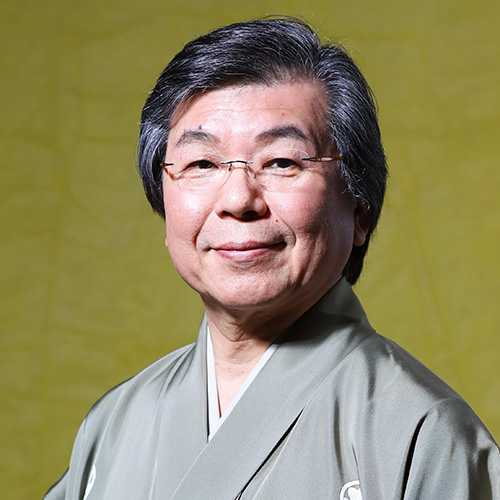By Anna Lister, Texas A&M University Global Engagement
BRYAN/COLLEGE STATION, April 7, 2025 – This spring, Texas A&M University will host a unique cultural event that promises to captivate music enthusiasts and curious minds alike. The 2025 World Shakuhachi Festival, set to take place from April 17-20, will bring together some of the world's most esteemed shakuhachi performers and scholars. The shakuhachi, a traditional Japanese bamboo flute, has a rich history and cultural significance. This festival offers a unique opportunity to explore and appreciate this ancient instrument.
.jpeg) The shakuhachi is a traditional Japanese bamboo flute that dates back to the 8th century. Originally imported from China, it was used in aristocratic court music. However, it struggled to compete with other instruments in terms of volume and eventually fell out of favor. It wasn't until Japan's medieval period, around the 13th and 14th centuries, that the shakuhachi found a new purpose. Mendicant monks, known as Komusō or “The Monks of Emptiness,” adopted the instrument as a tool for meditation and spiritual practice within the context of Zen Buddhism.
The shakuhachi is a traditional Japanese bamboo flute that dates back to the 8th century. Originally imported from China, it was used in aristocratic court music. However, it struggled to compete with other instruments in terms of volume and eventually fell out of favor. It wasn't until Japan's medieval period, around the 13th and 14th centuries, that the shakuhachi found a new purpose. Mendicant monks, known as Komusō or “The Monks of Emptiness,” adopted the instrument as a tool for meditation and spiritual practice within the context of Zen Buddhism.
"The shakuhachi was used by these monks as an ascetic tool," explains Dr. Martin Regan, a shakuhachi expert and professor in the College of Performance, Visualization, and Fine Arts. "They would play the flute as a form of sonic meditation, helping them to focus their breath and achieve a state of mindfulness."
The instrument's hauntingly beautiful sound has transcended its spiritual origins and found its way into various forms of modern media. The shakuhachi has been featured in numerous films, video games, and even pop music. For instance, its evocative tones can be heard in movies like "Memoirs of a Geisha," "The Last Samurai," and "Jurassic Park." Video game enthusiasts may recognize the shakuhachi from the soundtrack of "Ghost of Tsushima," a popular PlayStation 4 game. The instrument's distinctive sound has also been sampled in Peter Gabriel's hit song "Sledgehammer."
Music of the shakuhachi went interstellar when the “Golden Record” was launched on the Voyager II spacecraft in 1977, featuring a recording of the shakuhachi legend, the previous Living National Living Treasure Gorō Yamaguchi (1933-1999). The shakuhachi has become an important instrument in contemporary music and is—along with taiko drums—perhaps the best-known Japanese instrument in the world.
The shakuhachi produces a rich tone that can range from soft and mellow to sharp and piercing. Its sound is often described as haunting and meditative, capable of conveying deep emotion and tranquility. When played, the shakuhachi can evoke the sounds of nature, such as the wind rustling through bamboo or the call of distant birds, making it a powerful tool for creating a serene and reflective atmosphere.
The upcoming World Shakuhachi Festival at Texas A&M will offer a rare opportunity for attendees to experience the full spectrum of this instrument's capabilities. The festival will feature a series of concerts, workshops, and master classes led by renowned shakuhachi performers from around the globe. While the festival includes academic presentations and symposiums, it is primarily a celebration of the shakuhachi as a performance art. 55 guest artists—including the Living National Treasure of Japan Hōzan Nomura–will perform in 17 concerts presented in five geographic areas over a two-month period throughout Texas, 13 of which will be right here in College Station.

Dr. Regan emphasizes the importance of making the festival accessible to a wide audience. “The last time this festival was held in the United Stated was 20 years ago. This is a once in a lifetime opportunity.”
In addition to the concerts, the festival will feature a variety of workshops and master classes where participants can learn from esteemed shakuhachi teachers. These sessions are designed for both beginners and advanced players, providing a comprehensive introduction to the instrument and its techniques.
For those interested in learning more about the shakuhachi, Texas A&M offers a two-semester sequence in traditional Japanese performing arts, which includes the survey of the shakuhachi and its repertoire. Dr. Regan also recommends exploring online resources, such as YouTube performances and previous festival recordings, to gain a deeper appreciation for the instrument.
As the 2025 World Shakuhachi Festival approaches, Dr. Regan encourages everyone to take advantage of this unique cultural event. "This festival is not just for musicians or scholars," he says. "It's for anyone who appreciates music and wants to experience something truly special."
Don't miss your chance to be part of this extraordinary celebration of the shakuhachi. Mark your calendars for April 17-20 and join us at Texas A&M University for the World Shakuhachi Festival. For more information and to purchase tickets, visit the festival website.
